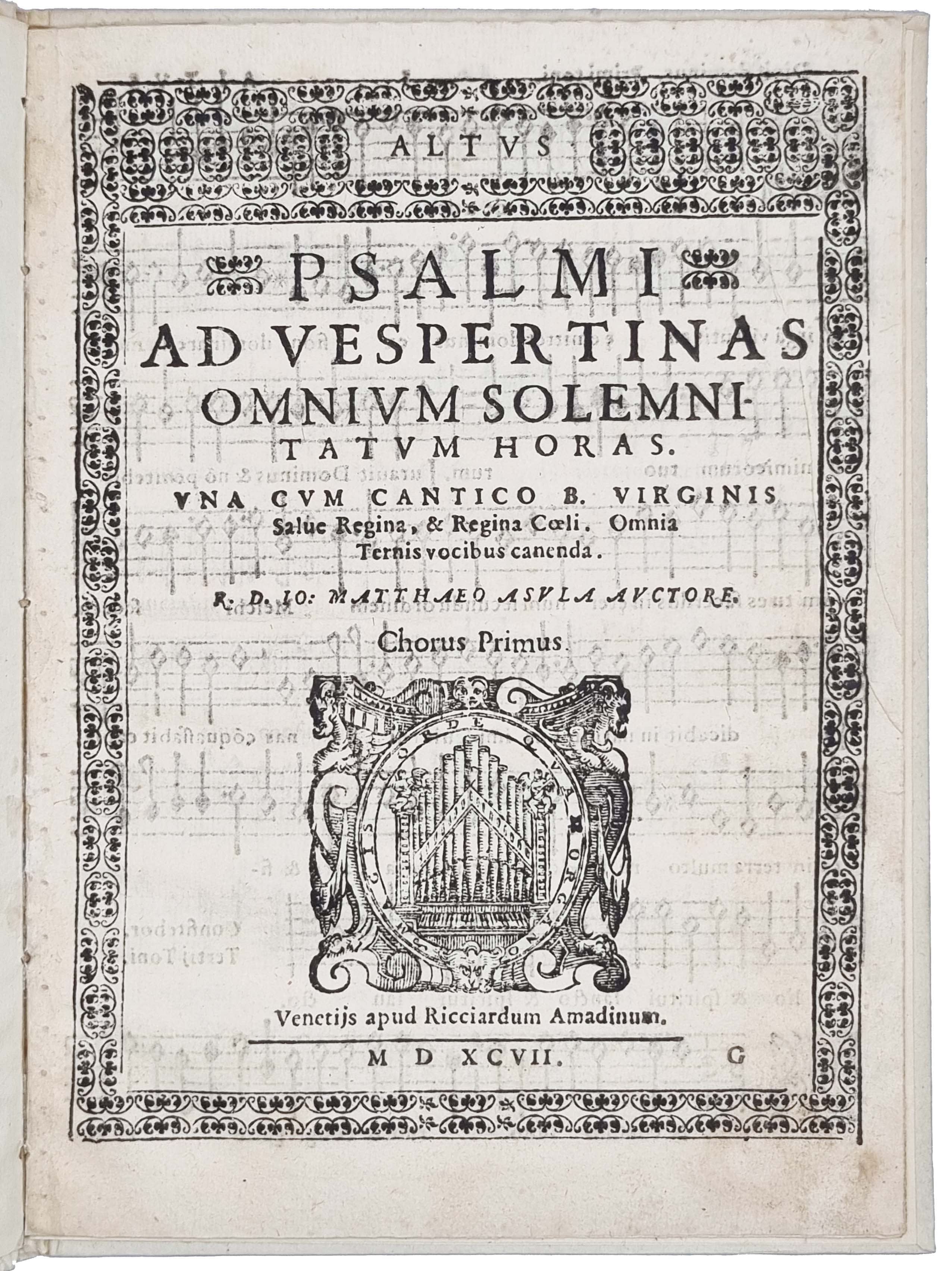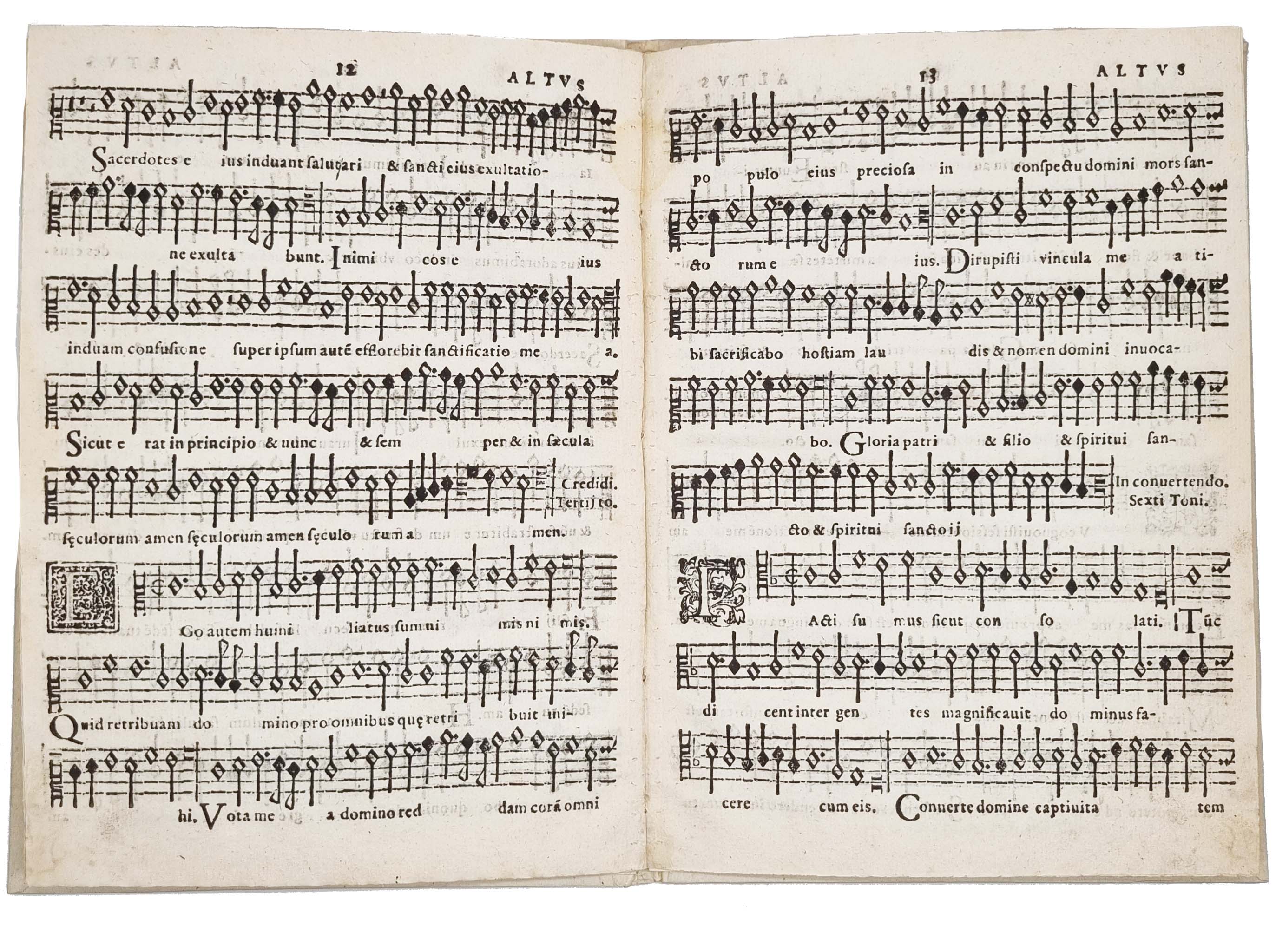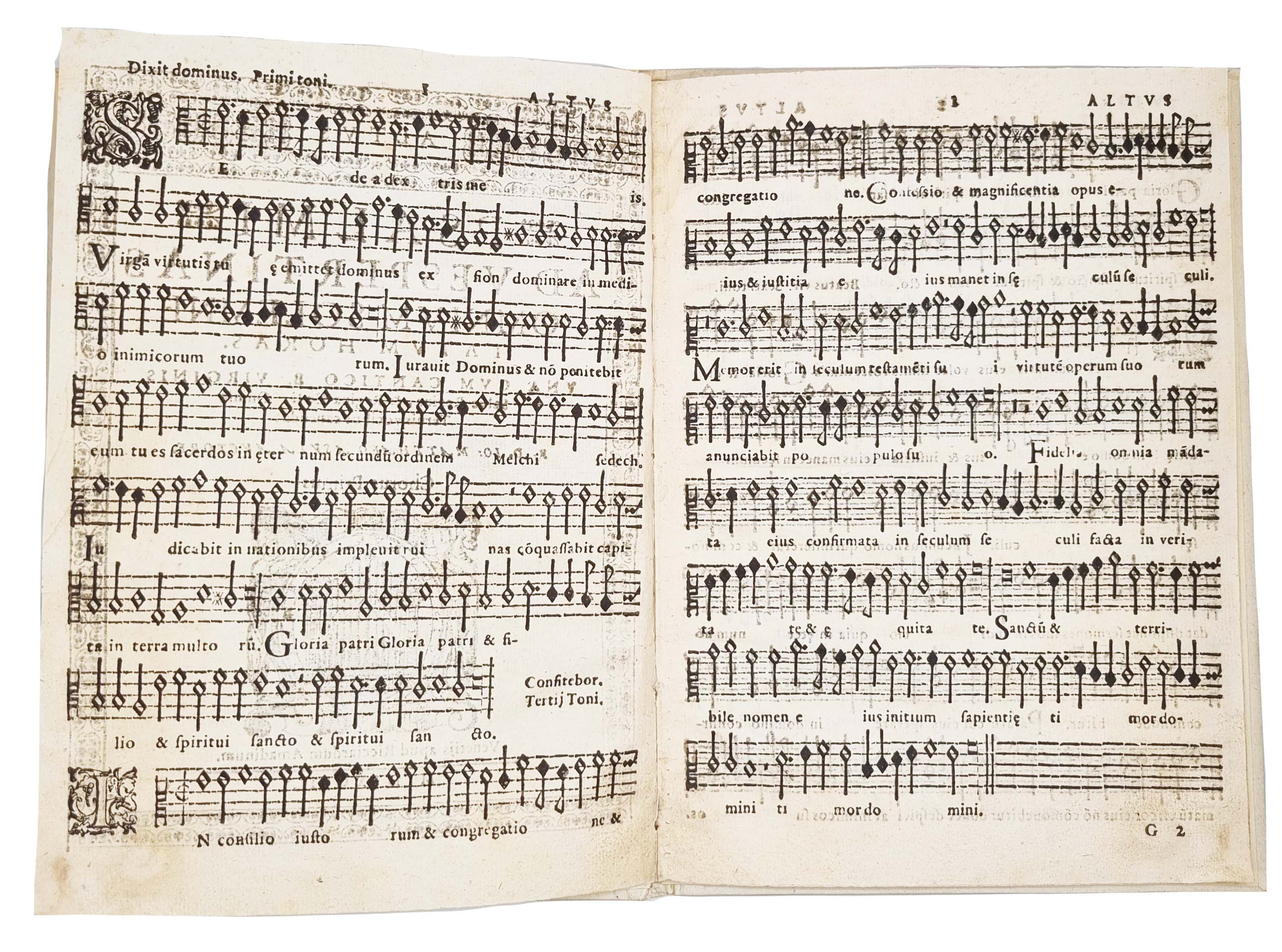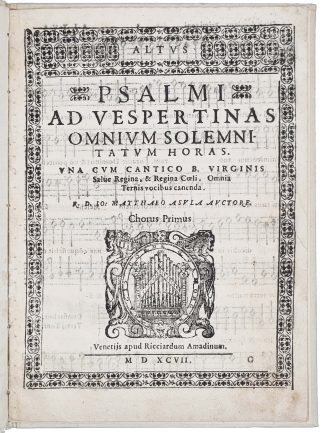ASOLA, Giovanni Matteo.
APPARENTLY UNIQUE
Psalmi ad vespertinas omnium solemnitatum horas, Chorus Primus
Venice, Riccardo Amadino, 1597£3,500.00
FIRST EDITION. 4to, pp. 22. Roman letter, square music notation on a 5-line stave. T-p within typographical border, woodcut printer’s device, woodcut floriated initials. Light age yellowing, small ink burn to upper blank margin of two ll, lower outer corner of last two ll. repaired. A very good copy, in modern boards. Label of William Salloch (1906 – 1990) to rear pastedown.
The sole known, unrecorded copy of the first edition of this musical score by Asola, containing a set of Vespers psalms for three voices. The 1602 and 1608 reprints are more common. This is the part of the ‘Chorus Primus’, the first choir, usually the most important, which in this case is ‘Altus’ (high). The part of the ‘chorus secundus’ was published for the first time in 1599, with the title “Cantus (Tenor, Bassus) Secundi Chori Vespertinae omnium Solemnitatum psalmodiae vocibus ternis paribus canendae (Venice, Amadino).
Giovanni Matteo Asola (1524-1609) was an Italian priest and composer born in Verona. At a young age, he entered the congregation of secular canons of Alga di Venezia, and later received his musical education from the renown composer of masses Vincenzo Ruffo in Verona. He became ‘maestro di cappella’ at Treviso in 1578 and at Vicenza in 1581, then moved to Venice, where he lived until his death. An extremely productive composer, Asola wrote almost exclusively sacred music, including numerous masses, psalms and hymns, but also a series of madrigals – a type of secular composition that was particularly appreciated in the Renaissance.
This attractive volume contains the words and music of psalms to be sung in the evening at Vespers, one of the most important services of the Roman rite, often celebrated more solemnly than the mass. At the time, Asola was one of the most prolific composers of Vespers settings, and his large and often reprinted corpus encompasses a great variety of styles. An exponent of the late Renaissance Venetian school, he frequently adopted the so called “Venetian polychoral style” (or ‘cori spezzati’), which involved spatially separate choirs singing in alternation. The choirs were usually different, high and low, and would sing successive, often contrasting phrases of the music creating spectacular stereo and echo effects.
In addition to a selection of usual psalms, such as ‘Dixit Dominus’, ‘Confitebor tibi’, ‘Laudate pueri’, ‘In exitu’, this score also includes – at the end – the hymn ‘Magnificat’ and the antyphons ‘Salve Regina’ and ‘Regina Coeli’. Interestingly, ‘Magnificat’ is often included in Vespers’ music publications as in some churches it was sung in polyphony with the first psalm, ‘Dixit Dominus’.
This ed. not in USTC, RISM, Worldcat, EDIT 16, Library Hub, Adams, BM STC 16th century, OPAC SBN Italy (Online Public Access Catalogue, National Library Services), unrecorded in the major libraries of Venice, Bologna, Milan, Rome, Florence. Not in ‘Catalogo della Biblioteca del Liceo musicale de Bologna’, Conservatorio G.B. Martini, where large collections of Asola’s music are held.In stock





